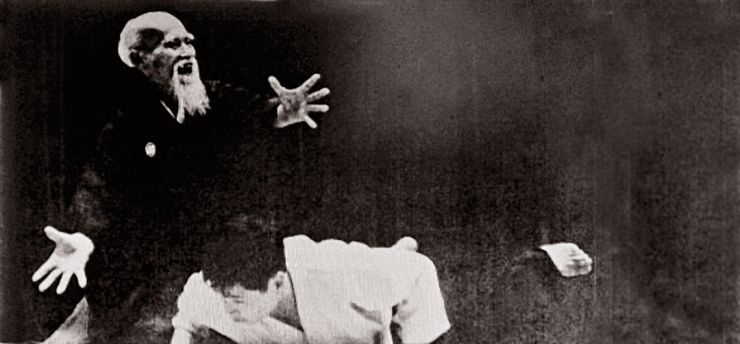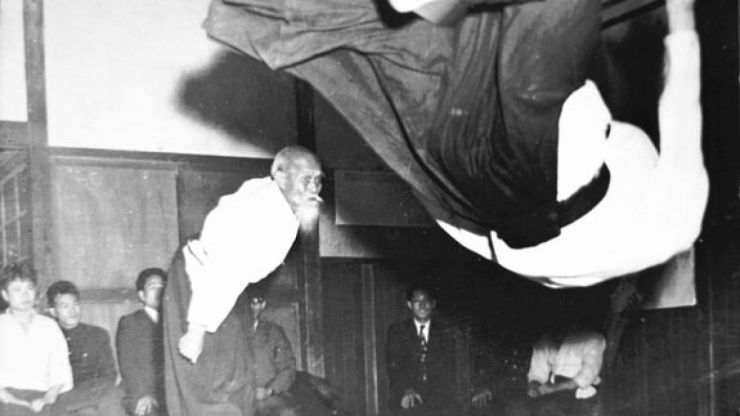Kokyu is a difficult notion to understand and assimilate. It is nevertheless essential to every technique. To use kokyu is to exploit the support of the ground and to convey this through the body. It requires correct positioning of the whole body:
too relaxed and the body loses strength;
too tense and the body becomes rigid, easy to unbalance, and incapable of effectively transmitting the forces involved.
There is a striking similarity here with meditation, where the body should be neither too tense nor too relaxed.
It is equally important to exploit one’s breathing: a calm and powerful exhalation is indistinguishable from good kokyu.
Kokyu nage - timing, unbalancing and spirit - no mystical connotations. Kokyu will be all the more powerful when it is accompanied by a good kiai.


The instant you "touch the sword". When you sense danger you must "fill yourself with the intent to cut down the opponent". This and nothing more.
"Aikido without kokyu-ryoku is not Aikido!"
Morihiro Saito Shihan
I have seen and felt some wonderful kokyu nage techniques applied by Aikido shihan. Once I had thrown a uke directly into the path of another Aikidoka who was being thrown by Saito shihan, a clash was inevitable - however with a subtle turn of his hips Saito shihan changed the direction of his uke so that he landed safely in the only open space available on the tatami. Seeing my expression Saito shihan smiled and surprised me by saying "It's a kind of magic" in broken English. In his case I am ready to believe him.
Kokyu nage is a demonstration of a mastery of timing distance and balance. When the techniques are applied using these principles to their utmost, very little physical power is needed. Kokyu nage is the ultimate use of fundamental principles, nothing more and nothing less.
“Train sincerely in the basics – the power found in them is kokyu-ryoku, Ki is there, Ki is extended, this will be the result.”
Morihiro Saito Shihan
Q: Yes, that’s right, isn’t it? For example, if you will excuse me, if you have some stories of a time that you were caught up in a fight related to Aikido, or a “tale of heroism” (武勇伝), or a story of a spiritual experience, then I would like to ask you about them.

Aikido Journal Editor Stanley Pranin translating for Morihiro Saito
A: I don’t know what you mean by spiritual, but Aikido training has conditioning in breath power (“kokyu-ryoku”), this is an extremely logical method of expressing power.
One night at Chichibu Station there was a fireworks display. About twenty people missed their chance to ride the last train and were in the station’s waiting room.
At that time someone who looked like a yakuza grabbed a young man wearing a business suit by the lapels and started pushing him around. So I said “Hey you, stop that!”, but he wouldn’t stop! Then when I grabbed the arm of the person who looked like a yakuza he let go of the other person and started grappling with me. So I took a step back, put my hand slightly under his chin and went to throw him. When I swept him with my right leg he flew straight backwards and hit his head on the concrete – he lost consciousness. The railway police came right away, so I passed him over to them.
That kind of kokyu-ryoku is what people talk about when they say things like “extend Ki”, but in the end Ki isn’t something special. Train sincerely in the basics – the power found in them is kokyu-ryoku, Ki is there, Ki is extended, this will be the result. When entering through theory without doing the actual techniques one cannot really realize this.
